#TravelAndLearn
Text
Discover the World: Study Abroad in 2024

🌍✈✨ Don't miss out on the chance to study abroad in 2024! 🎓 It's an awesome opportunity to go to another country to learn new things. You can make lots of new friends and see amazing places.
👉 Join us for the best study abroad consultancy. For more details contact Sunland Education Chandigarh.
Call us at: 98146-10782, 9501-443322
Visit us: SCO 260, Level I & II, Adjoining Nirman Cinema, SEC 32-D, Chandigarh ( India )
#StudyAbroad2024#GlobalEducation#TravelAndLearn#ExploreTheWorld#NewAdventuresAhead#StudentLifeGoals#CulturalExchange#EducationAbroad#DreamsToReality
0 notes
Text

📢 Make your Career in Australia
➡️ Apply for Study Visa
✅ Apply for Degree Courses
✅ Globally Ranked Institute
✅ Part-Time Work Rights
✅ Apply with/without IELTS
✅ Visa Assurance
Contact Details:
☎️ Call Us: +91 99099 25252 / +91 70415 77027
🌐 Visit Our Website: www.yami-edu.com
📍 Head Office: 526-527, Poddar Arcade, Near Railway Station, Khand Bazar, Varachha Road Surat - 395006
📍 Branch: 318, Opera Business Hub, Lajamni Chowk, Mota Varachha, Surat, Gujarat - 394101
#yami#yamiimmigration#australiadegree#studyabroad#visaapproval#worldlyscholar#travelandlearn#internationaleducation#crossculturallearning
0 notes
Text

🍁 Your Path to Excellence Starts Here! 🎓✨ Join us at the University of Regina, Canada, where dreams take shape. Our diploma and master's programs are the stepping stones to your academic and professional success. Be part of the journey. Be part of greatness. 📚🌏
#newboundsimmigration#newbounds#new_bounds_immigration#HigherEdCanada#DreamBigAchieveMore#StudyAbroad#InternationalEducation#GlobalLearning#TravelAndLearn#StudentLife#InternationalExperience#EducationalAdventure#StudyAbroadLife#LanguageLearning#AcademicJourney#DiscoverYourPath#StudentTravel
0 notes
Text
🌎🧠 Thursday Trivia Answers: Embark on a Global Knowledge Journey! 🌟🌏
Let's uncover the mysteries behind these worldwide questions:
Which country is known as the Land of the Rising Sun?
Answer: Japan 🇯🇵
In which European city can you find the famous statue of the Little Mermaid?
Answer: Copenhagen, Denmark 🇩🇰
The ancient city of Petra, famous for its rock-cut architecture, is located in which modern-day country?
Answer: Jordan 🇯🇴
What is the official language of Brazil?
Answer: Portuguese 🇵🇹
Which African river is the longest in the world?
Answer: The Nile River 🌍
How did you fare on this global journey of knowledge? Keep exploring, keep learning, and join us next Thursday for more intriguing trivia from around the world! 🌐🤓🌍

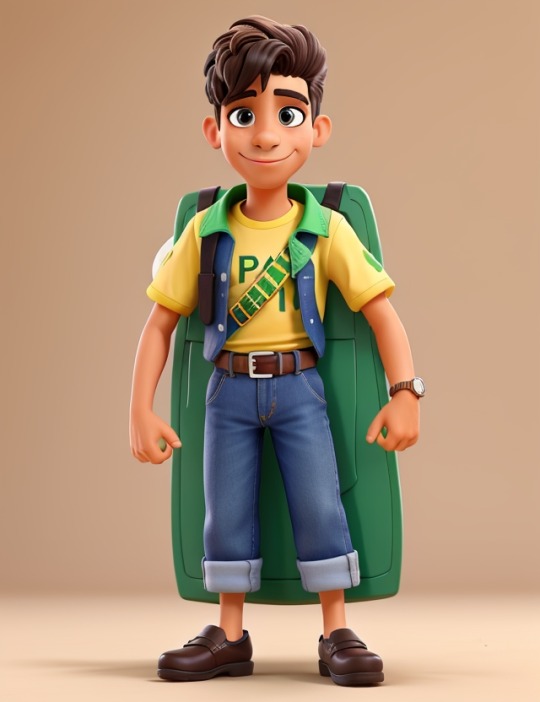
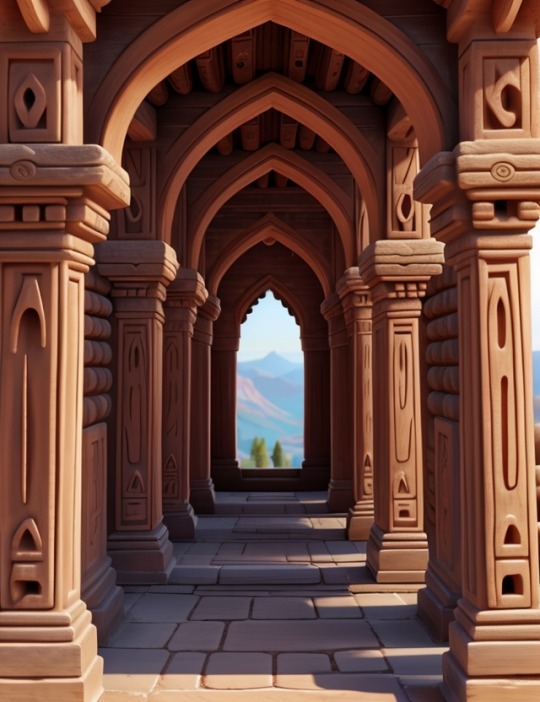


#ThursdayTrivia#GlobalFacts#TriviaAnswers#WorldKnowledge#StayCurious#KnowledgeIsPower#CulturalTrivia#GeographyQuiz#FunFacts#TravelAndLearn
0 notes
Text
Captivating Cultures: Exploring Diversity Through Travel
Why Explore Diverse Cultures:
Our world is a mosaic of cultures, traditions, and people. Here's why exploring diverse cultures through travel is a transformative experience:
Cultural Enrichment: It allows you to immerse yourself in new cultures, gaining insights into their traditions, customs, and ways of life.
Empathy and Understanding: By connecting with people from different backgrounds, you cultivate empathy and a broader perspective on global issues.
Breaking Stereotypes: Travel helps break down stereotypes and misconceptions, fostering a more inclusive and accepting worldview.
Tips for Cultural Exploration:
Research: Learn about the culture and history of the destination you plan to visit. Understanding the basics is a sign of respect.
Local Interaction: Engage with locals, ask questions, and be open to their stories and perspectives.
Try Local Cuisine: Sampling traditional dishes is a delightful way to experience a culture's flavors and traditions.
Respect Local Customs: Be aware of and respect local customs, dress codes, and etiquettes.
Attend Festivals: If possible, attend local festivals and celebrations to witness cultural traditions firsthand.
Learn the Language: Even basic phrases can go a long way in bridging language barriers and showing respect.
Leave No Trace: Practice responsible tourism and respect the environment and local communities.
Share Your Cultural Insights:
Have you had the privilege of immersing yourself in a new culture while traveling? Share your experiences, cultural insights, and any tips you have for fellow explorers who are eager to embrace diversity through travel.
CulturalExploration #DiversityInTravel #GlobalCitizen #TravelAndLearn #CulturalEnrichment #EmbraceDifferences #WanderlustAndWellness
#CulturalExploration#DiversityInTravel#GlobalCitizen#TravelAndLearn#CulturalEnrichment#EmbraceDifferences#WanderlustAndWellness#TravelExperience#CulturalAwareness#TravelInspiration
1 note
·
View note
Text

Happy World Teachers' Day!
At S.S Travels, we believe that education is the passport to the future, and teachers are the guiding stars on this incredible journey.
Thank you, teachers, for your unwavering dedication to shaping the future.
#WorldTeachersDay #TravelWithSS #EducatorsOfTheWorld #SSTravelsAdventures #TeachersDay #TravelAndLearn
#sstravles
0 notes
Text
Captivated by Kolkata's Charm
Hey Tumblr fam,
I've found myself in the captivating city of Kolkata, and the experiences so far have been nothing short of enchanting! Today, I had the privilege of stepping into the past at the awe-inspiring Victoria Memorial, a true architectural masterpiece. The echoes of history are palpable here.
Tomorrow, I'm gearing up to traverse the iconic Howrah Bridge, pay my respects at the Dakshineswar Kali Temple, and embark on a culinary journey through the vibrant streets. The sights, sounds, and flavors of Kolkata are weaving a tapestry of memories I'll treasure forever.
Do you have any Kolkata gems or offbeat spots you'd recommend? Let's share our travel stories and explore this city's soul together. Feel free to drop your tips and insights in the comments below! 🗺️✨ #KolkataDiaries #Wanderlust #CityOfJoy #TumblrTravels
#KolkataDiaries#CityOfJoy#TravelAdventures#CulturalExploration#Wanderlust#HistoryBuff#FoodieAdventures#ArchitecturalBeauty#PersonalGrowth#TravelAndLearn
0 notes
Text

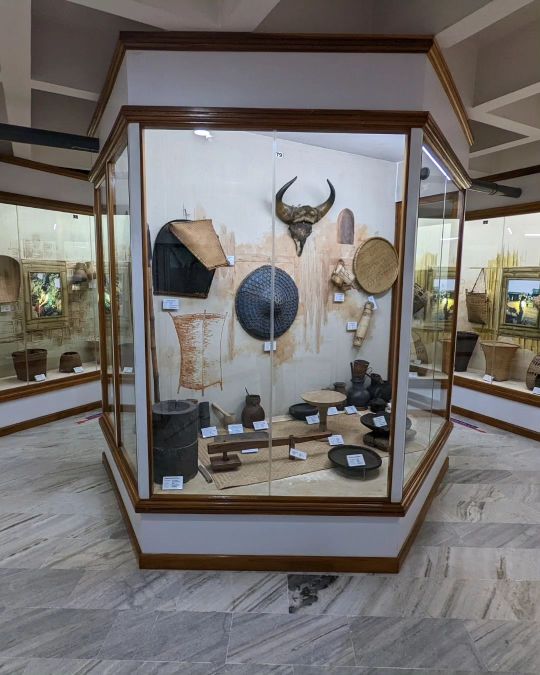
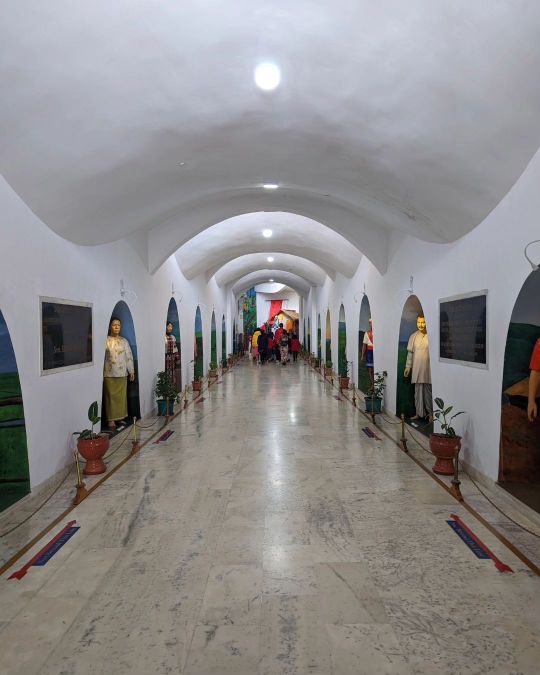


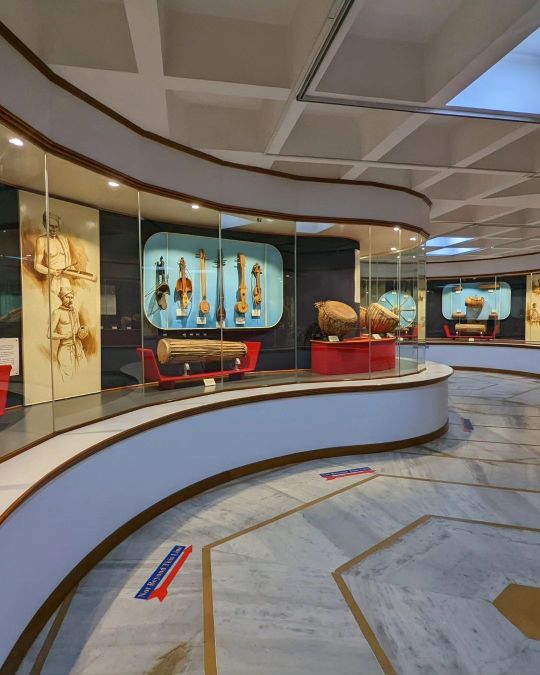



Resonating Heritage: Unveiling the Don Bosco Centre for Indigenous Cultures.
Echoes of the past!
Don Bosco Centre for Indigenous Cultures (DBCIC) is a unique venture of the Salesians of Don Bosco in North East India. The museum is dedicated to the preservation and promotion of these cultures, offering visitors a chance to learn about and appreciate the region's rich heritage. Here, every exhibit is a lesson - a story waiting to be told!
⏳Open Timings⏳
Monday to Saturday
Spring, Summer & Fall : 9:30am to 5:30pm (February 1 - November 30)
Winter: 9:30 am to 4:30pm (December 1 - January 31)
Closed on Sundays (Like every other thing in Meghalaya)
The next time you are in Shillong, make sure to pay a visit and learn a few new things about the region!
Need help?
DM now to start customising your private holiday to Meghalaya.
#meghalaya#chalohoppo#EchoesOfThePast#DonBoscoCentre#IndigenousCultures#NorthEastIndia#CulturalHeritage#LearningThroughExhibits#StorytellingMuseum#ExploreMeghalaya#HeritagePreservation#RichCulturalHistory#ShillongAdventures#MuseumExploration#TravelAndLearn#MeghalayaTrip#CustomHoliday#ShillongDiaries#NortheastCulture#MuseumVisits#ExploreThePast#MeghalayaTourism
0 notes
Link
"Unveiling Pattaya: A Historical Odyssey" 📚🏞️ Join us in a captivating journey as we navigate through the pages of "The History and Heritage of Pattaya." From its inception to today, uncover the stories that breathe life into this vibrant city. Subscribe and explore the #PattayaChronicles with us! 🏖️🌆
#wat phra yai#PattayaHistory#CityHeritage#ThailandTravels#HistoricalJourney#PattayaChronicles#CulturalExploration#CityLegends#UrbanTales#HistoricalInsights#CityCharacter#PattayaHeritage#TravelandLearn#CitySecrets#HistoryLovers#CulturalTreasures
0 notes
Video
#Travelandlearn for live #familytravel #Garifunaculturalandculinarytour (at Kalipuna Heritage Island) https://www.instagram.com/p/Cfq8rSTjxUR/?igshid=NGJjMDIxMWI=
0 notes
Photo



Mercoledì 6 luglio 2022, a partire dalle ore 19:00, presso la Biblioteca Comunale, in via Sant’Angelo n. 3 a Gallipoli, è inaugurata la mostra personale dal titolo Yellow Dreams. Convergenze Cromatiche Sostenibili dell’artista Caterina Romano, curata dal critico d’arte Marco Eugenio Di Giandomenico, organizzata da Antonella Stifani e dall’Associazione Travel and Learn di Lecce, presieduta da Elisabetta Branco.
Le opere d’arte sono esposte presso la Sede Consiliare del Comune di Gallipoli, in via Antonietta De Pace n. 78, dal 6 al 23 luglio 2022.
La mostra gode del patrocinio di Comune di Gallipoli, Regione Puglia, Provincia di Lecce, Museo Archeologico “Sigismondo Castromediano” di Lecce, Confindustria di Lecce, Ethicando Association di Milano.
Come afferma il curatore Marco Eugenio Di Giandomenico, Caterina Romano espone N. 20 opere d’arte «che esprimono il suo disagio esistenziale in una società contemporanea dominata dalla iper-comunicazione dei new media, sempre più incapace di far emergere e promuovere contenuti umani e culturali, alla mercé della ricerca di consensi ad ogni costo, “like/don’t like”, terreno fertile per nuovi conflitti planetari, che configurano un futuro incerto e oscuro. Il giallo è la Luce pura della sua creatività, è il ricordo di un mondo novecentesco denso di sogni meravigliosi, che guarda al terzo millennio con la speranza di una migliore realizzazione dell’essere umano, forte degli insegnamenti della storia e supportato dallo sviluppo incessante delle nuove tecnologie, le quali, tuttavia, si trasformano incredibilmente nell’oggetto e non nello strumento dell’agire degli individui, sia come singoli sia come collettività. L’artista perora l’identità culturale come punto di partenza di un restyling sociale est-etico, foriero di un rapporto sostenibile dell’essere umano con se stesso e con ogni componente animato e inanimato del pianeta. Il colore giallo c’è sempre, finché c’è vita, anche se rinnegato e mortificato dagli altri cromatismi, vale a dire dai drammi sociali contemporanei, impensabili anche poco più di vent’anni fa».
La mostra di Caterina Romano è il primo passo di un progetto internazionale, promosso da Ethicando Association di Milano e sotto la direzione artistica del critico d’arte Marco Eugenio Di Giandomenico, di selezione e valorizzazione di artisti contemporanei, sensibili ai temi della sostenibilità, che vede nella città di Gallipoli il palcoscenico per una manifestazione espositiva biennale, con il supporto di enti pubblici (Comune di Gallipoli, Regione Puglia, Provincia di Lecce, Museo Archeologico “Sigismondo Castromediano” di Lecce, accademie di belle arti di varie regioni d’Italia, enti pubblici territoriali, università e altre istituzioni culturali) e privati. Tra gli obiettivi dell’iniziativa c’è la riqualificazione e promozione culturale del territorio gallipolino.
La conferenza di inaugurazione vede gli interventi di Marco Eugenio Di Giandomenico (curatore artistico della mostra), Stefano Minerva (Sindaco Comune Gallipoli, Presidente Provincia di Lecce), Loredana Capone (Presidente Consiglio Regione Puglia), Luigi De Luca (Direttore Museo Archeologico “Sigismondo Castromediano” di Lecce, Coordinatore dei poli biblio-museali della Regione Puglia), Brizia Minerva (Curatore Storico dell’Arte Museo Archeologico “Sigismondo Castromediano” di Lecce), Nicola Delle Donne (Presidente Confindustria Lecce), Fernando Nazaro (Vice Presidente Sezione Turismo – Confindustria Lecce).
E’ prevista la proiezione del film “Caterina Romano: arte e vita a colori”.
La mostra è promossa mediaticamente dalla piattaforma di comunicazione internazionale Betting On Italy (BOI), la quale promuove iniziative culturali e artistiche su temi di valorizzazione e promozione del made in Italy nel mondo.
*******
https://www.eventbrite.it/e/biglietti-yellow-dreams-convergenze-cromatiche-sostenibili-di-caterina-romano-373918228487
#Marco Eugenio Di Giandomenico#marcoeugeniodigiandomenico#caterinaromano#yellowdreams#ethicando#ethicando association#bettingonitaly#antonellastifani#elisabettabranco#travelandlearn#gallipoli#gallipoliart#regione puglia#Comune di Lecce#Provincia di Lecce#museocastromediano#confindustrialecce
0 notes
Text



New! We're offering Family Bible Camp Weekends on the farm. Did you know, Dr. George Washington Carver was a Bible believing Christian? "He is noted as frequently saying throughout his life that 'faith in Jesus Christ was the only mechanism by which I could effectively pursue and perform the art of science' and 'The Lord has guided me, and without my Savior, I am nothing.'' There are three sessions June 24-26, July 22-24, and a special session for women August 19-21. Our Women's Camping Weekend is a part of our Word Up camp this summer. Mothers and daughters, grandmothers and granddaughters, aunts and nieces, mentors and mentees. There will be fall sessions announced. Space is limited so reserve your space soon!
Families join us for a time of Bible study about creation and nature on our farm. Dig deep in God’s word, looking at biblical agricultural and farming practices as you explore the farm property, the animals, and the crops growing. Stay on the farm at one of our campsites or commute each day. See our demonstration plots dedicated to the African diaspora and the plots inspired by the teaching of Dr. George Washington Carver. Eat meals prepared in the traditions of the African Diaspora including Gullah food ways.
Each session has a pre-camp day on Thursday for a visit to Penn Center.
Dr. Carver is noted by to have visited Penn School as a guest speak for 'Negro History Week' back in the day. Join us for a tour of the historic campus during the pre-camp sessions. For more information and to register visit our website morninggloryhomestead.com #campingweekend
#georgewashingtoncarver #camping #family #familycamping #outdoors #science #steameducation #bible #christianfarmer #christian #africandiaspora #africanfood #thearts #farming #creation #nature #biblecamp #farmcamp #travelandleisure #travelandlearn
#summermissions #missionarylife #tentcamping #discovery
1 note
·
View note
Text
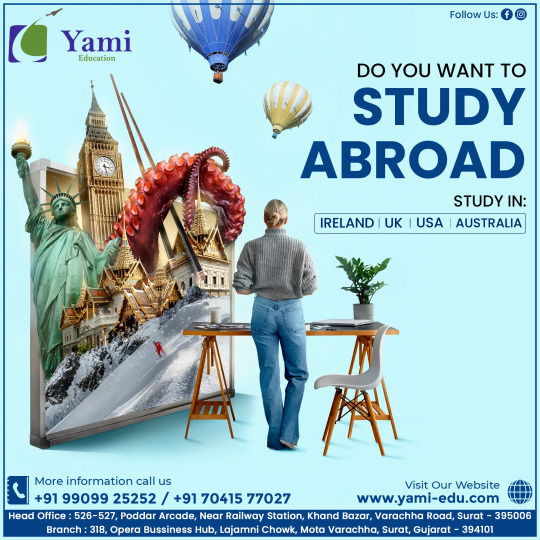
📢Do You Want to Study Abroad
➡Study In:
✅ Ireland
✅ Uk
✅ Usa
✅ Australia
Contact Details:
☎️ +91 99099 25252
🌐 www.yami-edu.com
📧 Email: [email protected]
🏠 526-527, Poddar Arcade, Near Railway Station, Khand Bazar, Varachha Road, Surat-395006
#studyabroad#fulfill your dreams#TravelAndLearn#globaleducation#internationalexperience#explorenewhorizons#higherstudies#studyopportunities#studyabroadgoals#diversecultures#educationabroad#learningabroad
1 note
·
View note
Photo

Local people - Tribute - Guanches _ #travel #knowledge #guanches #locslpeople #history #travelandlearn (w: SurfWyjazdy) https://www.instagram.com/p/CbZjPXooVv-/?utm_medium=tumblr
2 notes
·
View notes
Photo




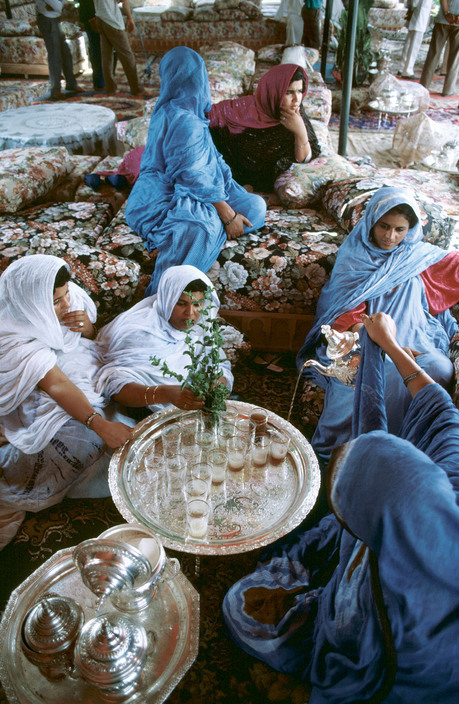
🇬🇧 Rule No. 1: for one who wants to be called a traveler and not a tourist !!!
🇬🇷 Κανόνας Νο1: για ένα που θέλει να αποκαλείται ταξιδιώτης και όχι τουρίστας !!!
Before traveling to a new country, it is a good idea to know about its history, its people and its culture ... if you do not, then you will find out when you return back at home and you would like to describe to your friends what you saw and live .. Simply you won't be able to do it...it will be like open the photo album of your trip and all the photos that you took to be out of focus!!!! So be careful not get caught yourself unread!!! But the most important thing is to feel frustrated about something you saw, such as an Amazigh woman, and you didn't recognize her, or a place that was a few meters from your Riyad and you didn't visit it!!!! Here are some of the basics you need to know for the history, the people and the culture of Morocco!!!The Moroccan People and their CultureOver the centuries, Morocco has been home to a wide range of cultures and diverse groups of people. So it’s only natural that Moroccan people mirror this diversity in their customs, traditions, and lifestyles. The layered history of colonization, military conquest and immigration created an intricate Moroccan mosaic of cultures, languages, ethnicities, and religions.This heterogeneity also extends to the region’s geography, with its rich coastlines, mountains, valleys, forests, rivers, and Saharan desert. Morocco has established itself as a crossroad of civilizations, who, over the course of hundreds and even thousands of years, have managed to leave their mark on the cultural landscape of the kingdom.Today the country boasts a population of 36.7 million, 4 languages, 9 world heritage sites, and 3 religions -Islam as predominant along with Christian and Jewish minorities. Here’s a general overview of Moroccan people and culture.Ethnicity, Language and ReligionThe two major ethnic groups in Morocco are the Arabs and the Berbers. The Arabs arrived as early as the late 8th century and conquered much of the coastal region. They established dynasties in Morocco and together with native Moroccan Berbers, extended control to what is now southern Spain and Portugal.There was a lot of intermixing between locals and Arabs, and today many Moroccan people claim mixed ethnicity, with only a few identifying as pure Arab. Over time, Arabic became the primary language, but the most significant import of the Arabs was Islam that shaped the Moroccan Culture.Today, 99% of Moroccan people are Muslim. Most are Sunni Muslims, the most common sect worldwide. A small minority are Shia, the second most common sect worldwide, and a few follow Sufism, a branch of Islam known for its sacred poetry and mysticism. In the past, Morocco had a significant Jewish population, but many migrated to Israel and other countries. Only a few thousand Jewish Moroccans still live in the country.There are also a few hundred thousand Christians living in Morocco, mostly of European descent. You’ll see mosques in every neighborhood, and a handful of churches and synagogues in larger cities.People tend to associate North Africa primarily with Arab culture, since Arabic is the official language and most Moroccan people follow Islam. However, Berber culture remains a very strong, and perhaps in many ways the primary influence on Moroccan culture. Most city and region names, some family names, styles of art, craft, and dress, many beliefs about individual liberty and freedom, and much Moroccan cuisine come from Berber culture.Since the Arabs focused their conquests on the coastal regions, certain parts of the interior were less affected, and retained a stronger sense of indigenous identity. When traveling in Morocco, you may notice that rural mountain and desert regions are more clearly Berber than other parts of Morocco.The Moroccan Berbers are an ethnic group with a history stretching back as far as 4,000 years. Berbers pre-date the arrival of the Arabs, Romans, French, and Spanish to Morocco by millennia! As much as 30% of the population of Morocco is of pure Berber heritage, and the vast majority of the remaining 70% has at least some Berber ancestry.There the many Berber groups in Morocco with different languages and customs, including the Drawa in the Draa Valley, the Shilha in the Atlas Mountains and the Sous Valley, the Riffia in the Rif Mountains, and the Sanhaja in the Middle Atlas and Sahara. However, all groups use the general name Amazigh, meaning free people, to denote their identity as indigenous Moroccans. These groups have different (though sometimes related) languages, styles of dress, and customs. Some of these differences stem from the diverse environments that they call home, including the high Atlas mountains, the milder valleys, and the hot, dry, Sahara.The Berber languages are mostly spoken languages, though there is a Berber alphabet that was developed thousands of years ago and is still in use. Over 8 million Moroccans speak a Berber tongue as their primary language, and a deepening sense of pride in their history has resulted in TV programs broadcast and school offering classes in these languages.Most Berbers who continue to speak the language and maintain purer Berber culture live in rural areas such as the Atlas mountains or the Moroccan Sahara. Moroccans living in larger cities and coastal regions tend to incorporate a mixture of Berber, Arab, and Western influences.While Arab and Berber are the two main ethnic groups, more recent centuries have brought people of many nations to Morocco. Both France and Spain colonized parts of the country, leaving lasting impacts in language, architecture, education systems, law, art, and cuisine.Even though Morocco gained full independence in 1956, the local dialect of Arabic is peppered with French and Spanish words. French is an important official language, and Iberian dishes are popular in restaurants and cafés. This influence is perhaps most striking in Tangier, which has been a cosmopolitan city for centuries.Morocco is also increasingly a destination for Africans from other countries seeking better economic opportunities. Immigrants from Senegal and Cameroon settle in northern Morocco, either permanently or on their way Europe, bringing with them new customs and vibrant styles of art, music, and dance.
---------------------------------------------------------------------------------------------------------
Πριν ταξιδέψετε σε μια νέα χώρα καλό θα ήταν να γνωρίζετε για την ιστορία της τους ανθρώπους της και τον πολιτισμό της … αν δεν το κάνετε τότε θα ανακαλύψετε όταν θα επιστρέψετε πίσω και θα θέλατε να περιγράψετε στους φίλους σας αυτό που είδατε και ζήστε ότι απλά δεν θα μπορείτε!!! Θα είναι σαν να ανοίγετε το άλμπουμ φωτογραφιών που τραβήξατε και θα είναι όλες out of focus!!!! Γι αυτό προσέξτε μην πιαστείτε αδιάβαστοι!!! Το άλλο είναι οτι κινδυνεύετε εκτός απο αδιάβαστοι να νιώσετε και απογοητευμένοι για κάτι που είδατε όπως πχ μια γυναίκα Amazigh και δεν την αναγνωρίσατε η ένα μέρος που βρισκόταν λίγα μέτρα από το Ριάντ σας και δεν το επισπευτήκατε!!!!Εδώ λοιπόν σας έχω μερικά από τα βασικά που πρέπει να γνωρίζετε για το Μαρόκο!!!Ο Μαροκινός λαός και ο πολιτισμός του: Με τους αιώνες, το Μαρόκο φιλοξένησε ένα ευρύ φάσμα πολιτισμών και διαφορετικών ομάδων ανθρώπων. Είναι φυσικό λοιπόν οι Μαροκινοί να αντικατοπτρίζουν αυτήν την ποικιλομορφία στα έθιμα, τις παραδόσεις και τον τρόπο ζωής τους. Η πολυεπίπεδη ιστορία του αποικισμού, της στρατιωτικής κατάκτησης και της μετανάστευσης δημιούργησε ένα περίπλοκο μαροκινό μωσαϊκό πολιτισμών, γλωσσών, εθνικοτήτων και θρησκειών.
Αυτή η ετερογένεια επεκτείνεται και στη γεωγραφία της περιοχής, με τις πλούσιες ακτές, τα βουνά, τις κοιλάδες, τα δάση, τα ποτάμια και την έρημο της Σαχάρας. Το Μαρόκο έχει καθιερωθεί ως το σταυροδρόμι των πολιτισμών, οι οποίοι, κατά τη διάρκεια εκατοντάδων ακόμη και χιλιάδων ετών, κατάφεραν να αφήσουν το σημάδι τους στο πολιτιστικό τοπίο του βασιλείου.
Σήμερα η χώρα έχει πληθυσμό 36,7 εκατομμυρίων, 4 γλώσσες, 9 μνημεία παγκόσμιας κληρονομιάς και 3 θρησκείες – το Ισλάμ κυριαρχεί μαζί με τις χριστιανικές και εβραϊκές μειονότητες.Εθνικότητα, Γλώσσα και Θρησκεία : Οι δύο μεγάλες εθνοτικές ομάδες στο Μαρόκο είναι οι Άραβες και οι Βέρβεροι. Οι Άραβες έφτασαν στα τέλη του 8ου αιώνα και κατέλαβαν μεγάλο μέρος της παράκτιας περιοχής στην χώρα . Εγκαθίδρυσαν δυναστείες και μαζί με τους γηγενείς Μαροκινούς Βέρβερους, επέκτειναν τον κυριαρχικό τους έλεγχο σε αυτό που σήμερα είναι η νότια Ισπανία και Πορτογαλία.
Υπήρχε πολλή ανάμιξη μεταξύ ντόπιων και Αράβων, και σήμερα πολλοί Μαροκινοί θεωρούνται ως μικτή εθνικότητα, με λίγους να θεωρούν τους εαυτούς τους ως καθαρούς Άραβες. Με την πάροδο του χρόνου, τα αραβικά έγιναν η κύρια γλώσσα, αλλά το πιο σημαντικό που οι Άραβες εισήγαγαν στο Μαρόκο ήταν το Ισλάμ που διαμόρφωσε τον μαροκινό πολιτισμό.Σήμερα, το 99% των μαροκινών είναι μουσουλμάνοι. Οι περισσότεροι είναι Σουνίτες μουσουλμάνοι, που είναι η πιο διαδεδομένη αίρεση σε όλο τον κόσμο. Μια μικρή μειονότητα είναι οι Σιίτες, η δεύτερη πιο διαδεδομένη αίρεση στον κόσμο και λίγοι ακολουθούν τον Σουφισμό, ένα παρακλάδι του Ισλάμ γνωστό για την ιερή ποίηση και το μυστικισμό του. Στο παρελθόν, το Μαρόκο είχε σημαντικό εβραϊκό πληθυσμό, αλλά πολλοί από αυτούς μετανάστευσαν στο Ισραήλ και σε άλλες χώρες. Σήμερα μόνο μερικές χιλιάδες Εβραίοι Μαροκινοί ζουν ακόμα στη χώρα.Υπάρχουν επίσης μερικές εκατοντάδες χιλιάδες Χριστιανοί που ζουν στο Μαρόκο, κυρίως ευρωπαϊκής καταγωγής. Θα δείτε τζαμιά σε κάθε γειτονιά, και μερικές εκκλησιές και συναγωγές κυρίως στις μεγαλύτερες πόλεις.
Οι περισσότεροι άνθρωποι τείνουν να συνδέουν τη Βόρεια Αφρική κυρίως με τον αραβικό πολιτισμό, καθώς τα Αραβικά είναι η επίσημη γλώσσα και οι περισσότεροι Μαροκινοί ακολουθούν το Ισλάμ. Ωστόσο, η κουλτούρα των Βέρβερων παραμένει πολύ ισχυρή, και ίσως με πολλούς τρόπους η κύρια επιρροή στον μαροκινό πολιτισμό. Τα περισσότερα ονόματα πόλεων και περιοχών, μερικά οικογενειακά ονόματα, στυλ τέχνης, χειροτεχνίας και ενδυμασίας , αλλά και πολλές πεποιθήσεις για την ατομική ελευθερία και την ελευθερία γενικότερα , καθώς και μεγάλο μέρος της μαροκινής κουζίνας προέρχονται από τον πολιτισμό Βέρβερων .Δεδομένου ότι οι Άραβες επικεντρώθηκαν στις κατακτήσεις των παράκτιων περιοχών, ορισμένα τμήματα της ενδοχώρας επηρεάστηκαν λιγότερο και διατήρησαν ισχυρότερη την γηγενή τους ταυτότητα. Όταν ταξιδεύετε στο Μαρόκο, μπορεί να παρατηρήσετε ότι οι αγροτικές ορεινές και ερημικές περιοχές του είναι ξεκάθαρα Βερβερικές σε σχέση με άλλες περιοχές του Μαρόκου.Οι Μαροκινοί Βέρβεροι είναι μια εθνοτική ομάδα με ιστορία 4.000 ετών . Οι Βέρβεροι προϋπήρχαν στο Μαρόκο χιλιετίες πριν τους Άραβες, τους Ρωμαίους, τους Γάλλους και τους Ισπανούς ! Το 30% του πληθυσμού του Μαρόκου έχει καθαρή Βερβερική καταγωγή , και η συντριπτική πλειονότητα του υπόλοιπου 70% έχει τουλάχιστον κάποια κληρονομική σχέση με τους Βέρβερους. Υπάρχουν πολλές Βερβερικές φιλές με διαφορετικές γλώσσες και έθιμα στο Μαρόκο, όπως οι Drawa στην κοιλάδα Draa, οι Shilha στα βουνά του Άτλαντα και στην κοιλάδα του Sous, οι Riffia στα βουνά Rif και οι Sanhaja στον Μεσαίο Άτλαντα και τη Σαχάρα. Ωστόσο , όλες αυτές οι φιλές χρησιμοποιούν μια γενικότερη ονομασία αυτή των Amazigh, που σημαίνει ελεύθεροι άνθρωποι, για να δηλώσουν την ταυτότητά τους ως αυτόχθονες Μαροκινοί. Αυτές οι ομάδες έχουν διαφορετικές (αν και μερικές φορές σχετικές) γλώσσες, στυλ ενδυμασίας και εθίμων . Μερικές από αυτές τις διαφορές οφείλονται στις διαφορετικές περιοχές που ζουν και που αποκαλούν σπίτι τους , όπως είναι τα ψηλά βουνά του Άτλαντα, οι ήπιες κοιλάδες και η ζεστή, ξηρή, Σαχάρα.Οι Βερβερικές γλώσσες είναι ως επί το πλείστον προφορικές , αν και υπάρχει εδώ και χιλιάδες χρόνια ένα Βερβερικό αλφάβητο το όποιο εξακολουθεί να χρησιμοποιείται. Πάνω από 8 εκατομμύρια Μαροκινοί μιλούν μια από τις Βερβερικές γλώσσες ως κύρια γλώσσα τους, και αυτή η βαθύτερη αίσθηση υπερηφάνειας που τους διακρίνει για την ιστορία τους έχει οδηγήσει σε στην δημιουργία εκπομπών και τηλεοπτικών προγραμμάτων , όπως και μαθημάτων σχολικής προσφοράς σε αυτές τις γλώσσες. Οι περισσότεροι που συνεχίζουν να μιλούν τη γλώσσα τους διατηρούν μια καθαρότερη Βερβερική κουλτούρα και ζουν σε αγροτικές περιοχές, όπως τα βουνά του Άτλαντα ή στη Μαροκινή Σαχάρα. Οι Μαροκινοί που ζουν σε μεγαλύτερες πόλεις και στις παράκτιες περιοχές είναι ένα μείγμα από επιρροές Βέρβερων , Αράβων και Δυτικών .Ενώ οι Άραβες και οι Βέρβεροι είναι οι δύο κύριες εθνοτικές ομάδες του Μαρόκου , οι πιο πρόσφατοι αιώνες έφεραν στην χώρα ανθρώπους πολλών αλλων εθνικοτήτων . Τόσο οι Γάλλοι όσο και οι Ισπανοί αποίκισαν τμήματα της χώρας, αφήνοντας μόνιμες επιδράσεις στη γλώσσα, την αρχιτεκτονική, τα εκπαιδευτικά συστήματα, τη νομοθεσία, την τέχνη και την κουζίνα.
Παρόλο που το Μαρόκο απέκτησε την πλήρη ανεξαρτησία του το 1956, η τοπική διάλεκτος των αραβικών είναι γεμάτη με γαλλικές και ισπανικές λέξεις. Τα γαλλικά είναι η πιο σημαντική επίσημη γλώσσα και τα ιβηρικά πιάτα είναι τα πιο δημοφιλή σε εστιατόρια και καφέ. Αυτή η επιρροή είναι ίσως πιο έντονη στην Ταγγέρη, η οποία υπήρξε μια κοσμοπολίτικη πόλη για αιώνες.
Το Μαρόκο είναι όλο και περισσότερο ένας προορισμός για τους Αφρικανούς από άλλες χώρες που αναζητούν καλύτερες οικονομικές ευκαιρίες. Οι μετανάστες από τη Σενεγάλη και το Καμερούν εγκαθίστανται στο βόρειο Μαρόκο, είτε μόνιμα είτε στο δρόμο τους προς την Ευρώπη, φέρνοντας μαζί τους νέα έθιμα και έντονα στιλ τέχνης, μουσικής και χορού.
#skymoroccotrips#moroccan culture#moroccanpeople#Berber#berberculture#amazigh#travelgram#instamorocco#atlasmountains#High Atlas#language#religion#travelagency#travelandadventure#travelandlearn#tour and travel#private tours#deserttours#Moroccotours#travelwithyourheart#TravelwithLove#travelwithlocals#travelwiththebests#morocco#moroccan#exploremorocco#happytravellers👣❤️#enjoythejourney😎#skymoroccotrips🇲🇦#savethetourism
6 notes
·
View notes
Photo

European charm at its best. 🇮🇹 There's something about Europe that makes me feel at home. The architecture and civil engineering is so inspiring even though it's old and weathered. The homes, churches and even the water fountains are still being used despite their age and cultural significance. Taking a walk through the narrow streets exposes some of that charm that we all love. @carryonwithkids #traveleurope #familyvacation #familytraveltribe #familytravel #travelwithkids #travelphotography #europetravel #familylife #kidstravel #worldschooling #travelandlearn #culturetrip #culture #carryonwithkids https://www.instagram.com/p/CCZD51vl0Pm/?igshid=1hc332hzsb7b3
#traveleurope#familyvacation#familytraveltribe#familytravel#travelwithkids#travelphotography#europetravel#familylife#kidstravel#worldschooling#travelandlearn#culturetrip#culture#carryonwithkids
2 notes
·
View notes